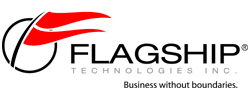Dell PowerEdge 1950 System Boards
Refurbished Dell PowerEdge 1950 System Boards for Sale
Search for any genuine Dell PowerEdge 1950 System Boards below. If you need a Dell PowerEdge 1950 System Boards that is not listed on our website, please contact us. Chances are, we can get it for you.
Check back often as we are adding Dell PowerEdge 1950 servers and Dell PowerEdge 1950 spare Parts daily to Flagship Tech's website.
Dell manufactured three generations of the PowerEdge 1950 server model. It is important to understand the differences among the system boards prior to upgrading or replacing system components.
All system boards support either PC2-4200F (533MHz) or PC2-5300F (667MHz) DDR2 fully-buffered, ECC-registered memory DIMMS when installed in matching pairs. All system boards feature eight slots and require memory DIMMS to be installed in matching pairs.
Generation I system boards (motherboards) support Intel Xeon 5000/5100 series dual-core processors with 4M cache only. They will NOT work with any quad-core CPUs like the 5300/5400 series with 8M/12M cache, or the 5200 series dual-cores with 6M cache. Maximum memory allowed is 32GB. Part numbers for Generation I system boards include CW954, D8635 and NK937.
Generation II system boards support Intel Xeon 5300 quad-core processors with 8MB cache and are backwards-compatible with the dual-core 4MB cache 5000/5100 series. Maximum memory allowed is 32GB. Part numbers for Generation II system boards include DT097 and UR033.
Generation III system boards support Intel Xeon 5200/5400 series quad-core processors with 6MB and 12MB cache, respectively. They are backwards-compatible with quad-core 8MB cache 5300 series processors as well as dual-core 4MB cache 5000/5100 series CPUs. Maximum memory allowed is 64GB. Dell also added an internal SATA plug to support SATA-based DVD optical drives. Part numbers for Generation III system boards include TT740, J555H, H723K, J243G and M788G.
![]() If you're looking to replace a generation I or II system board in your PowerEdge 1950, consider upgrading to a generation III. Doing so now will allow you to install faster CPUs and more memory in the future, thereby adding more processing power and extending the life of your system.
If you're looking to replace a generation I or II system board in your PowerEdge 1950, consider upgrading to a generation III. Doing so now will allow you to install faster CPUs and more memory in the future, thereby adding more processing power and extending the life of your system.
